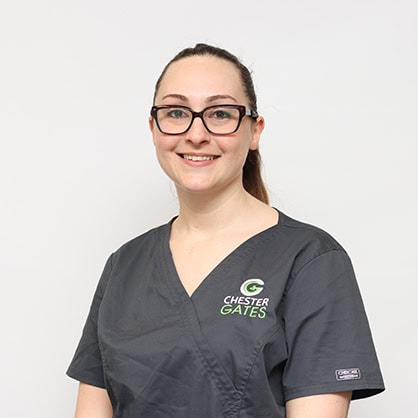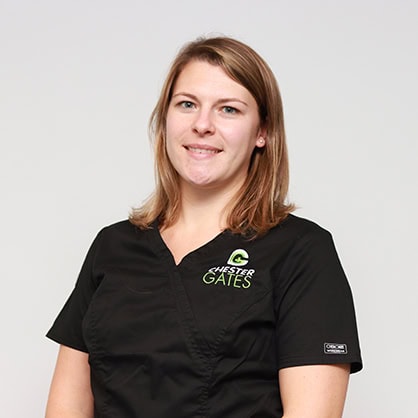Soft Tissue & General Surgery
Our soft tissue surgeons are on hand to manage a wide variety of surgical problems.
Overview
Soft tissue clinicians are extensively trained and have a wealth of experience in management of soft tissue cases. At ChesterGates we are able to accept referrals in a wide range of soft tissue cases including thoracic, urogenital, gastro-intestinal, oncological, skin reconstruction and ear/nose/throat surgeries.
Following a comprehensive consultation with one of our soft tissue surgeons, patients are usually admitted for further investigations and treatment on the same day, however some diagnostic procedures may be scheduled for another time.
Our soft tissue department is able to provide the very best in diagnostic, surgical and perioperative care for all our surgical patients due to our state-of-the-art facilities including digital radiography, endoscopy, fluoroscopy, CT scanner and 1.5T MRI. In addition, support is provided by a RCVS and ECVS multi-disciplinary specialist-led team of clinicians as well as highly trained and dedicated veterinary nurses to optimise the perioperative management of our surgical patients. Our hospital status, with veterinary surgeons and qualified nurses continuously on site, allows us to provide excellent in-patient care 24 hours a day, 365 days a year.
Surgical conditions treated by ChesterGates Veterinary Specialists include, but are not limited to:
- Upper Respiratory Tract – Brachycephalic obstructive airway syndrome, laryngeal paralysis/collapse, tracheotomy/tracheostomy.
- Urogenital – Ectopic ureter, nephrectomy/nephrotomy, prostatic surgery, urethrostomy, urethral sphincter mechanism incompetence.
- Head & Neck – Total ear canal ablation & lateral bulla osteotomy, ventral bulla osteotomy, mandibulectomy/maxillectomy, salivary mucocele, thyroidectomy & parathyroidectomy.
- Abdominal – Hiatal hernia, gastric distension/volvulus, portosystemic shunt, hepatic lobectomy, biliary diversion, adrenalectomy.
- Thoracic – Vascular ring anomalies, patent ductus arteriosus, pericardiectomy, lung lobectomy, diaphragmatic hernia, thymoma removal.
- Skin – Skin flap, skin graft, oncological resections.
- Miscellaneous – Nasofrontal aspergillosis, perineal hernia, oesophageal foreign bodies.
The Team

Erika Bianchini
Diplomate, European College of Veterinary Surgeons, EBVS® European Specialist in Small Animal Surgery

Georgia Jenkins
Diplomate, European College of Veterinary Surgeons, EBVS® European Specialist in Small Animal Surgery

Matthew Smith
RCVS and EBVS Specialist in Veterinary Surgery

Pablo Sordo Pedro
Surgical Intern
Services we offer
At ChesterGates we offer a wide range of specialist-led services to provide the highest level of care available.
